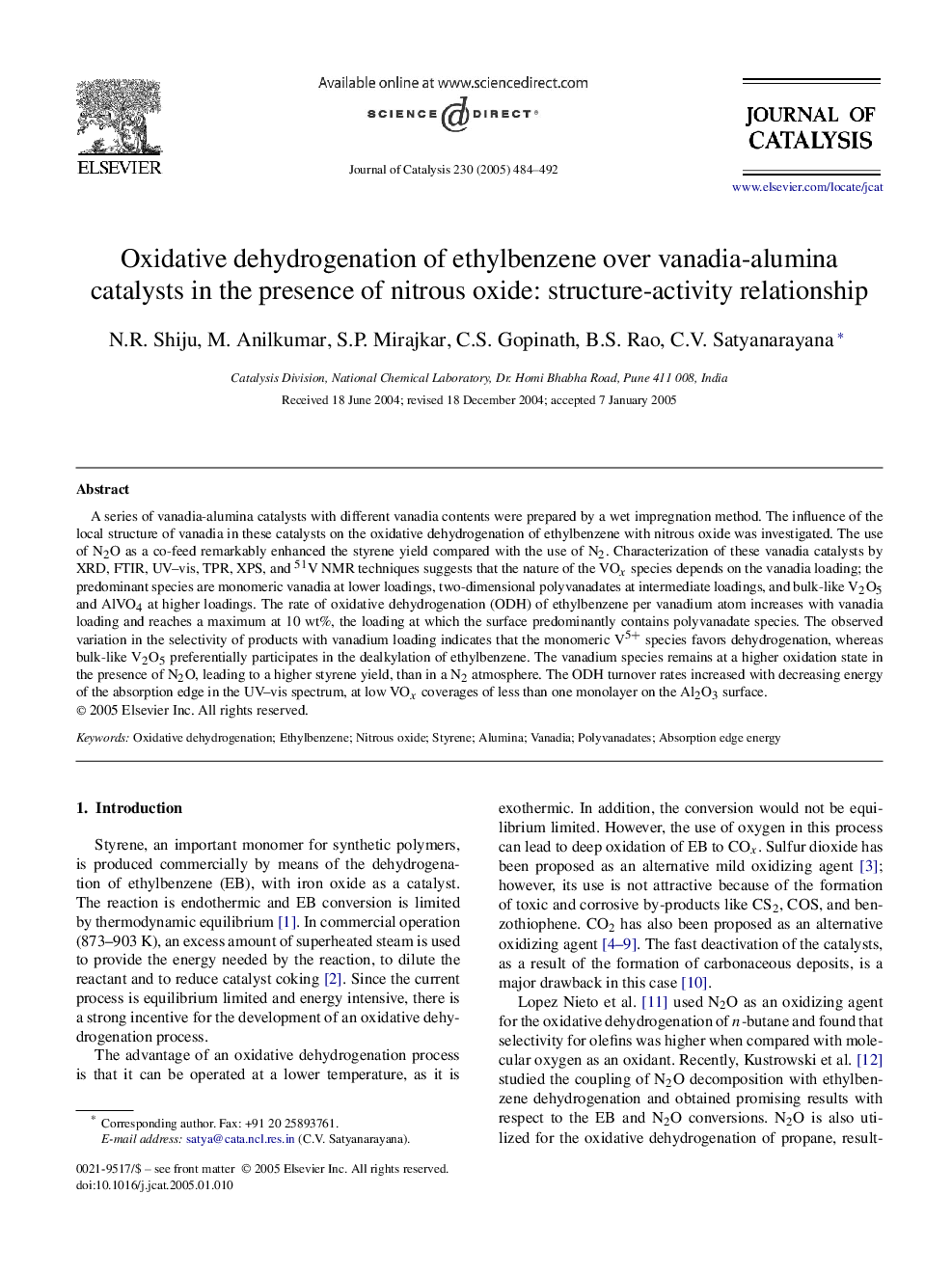| Article ID | Journal | Published Year | Pages | File Type |
|---|---|---|---|---|
| 9614234 | Journal of Catalysis | 2005 | 9 Pages |
Abstract
A series of vanadia-alumina catalysts with different vanadia contents were prepared by a wet impregnation method. The influence of the local structure of vanadia in these catalysts on the oxidative dehydrogenation of ethylbenzene with nitrous oxide was investigated. The use of N2O as a co-feed remarkably enhanced the styrene yield compared with the use of N2. Characterization of these vanadia catalysts by XRD, FTIR, UV-vis, TPR, XPS, and 51V NMR techniques suggests that the nature of the VOx species depends on the vanadia loading; the predominant species are monomeric vanadia at lower loadings, two-dimensional polyvanadates at intermediate loadings, and bulk-like V2O5 and AlVO4 at higher loadings. The rate of oxidative dehydrogenation (ODH) of ethylbenzene per vanadium atom increases with vanadia loading and reaches a maximum at 10 wt%, the loading at which the surface predominantly contains polyvanadate species. The observed variation in the selectivity of products with vanadium loading indicates that the monomeric V5+ species favors dehydrogenation, whereas bulk-like V2O5 preferentially participates in the dealkylation of ethylbenzene. The vanadium species remains at a higher oxidation state in the presence of N2O, leading to a higher styrene yield, than in a N2 atmosphere. The ODH turnover rates increased with decreasing energy of the absorption edge in the UV-vis spectrum, at low VOx coverages of less than one monolayer on the Al2O3 surface.
Keywords
Related Topics
Physical Sciences and Engineering
Chemical Engineering
Catalysis
Authors
N.R. Shiju, M. Anilkumar, S.P. Mirajkar, C.S. Gopinath, B.S. Rao, C.V. Satyanarayana,
